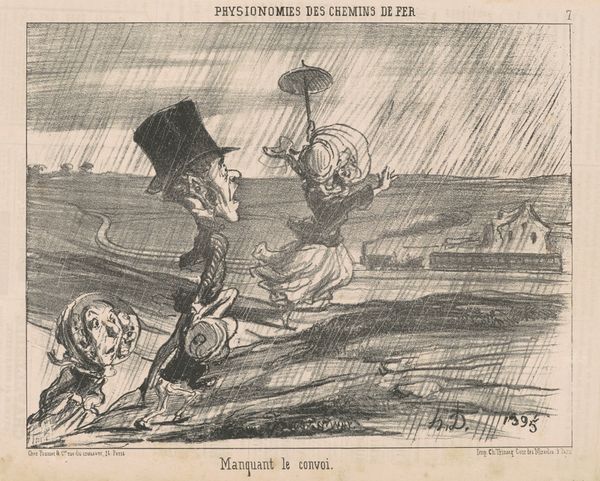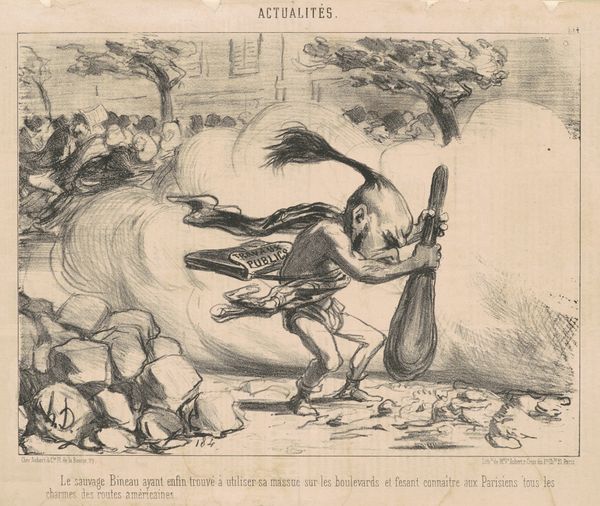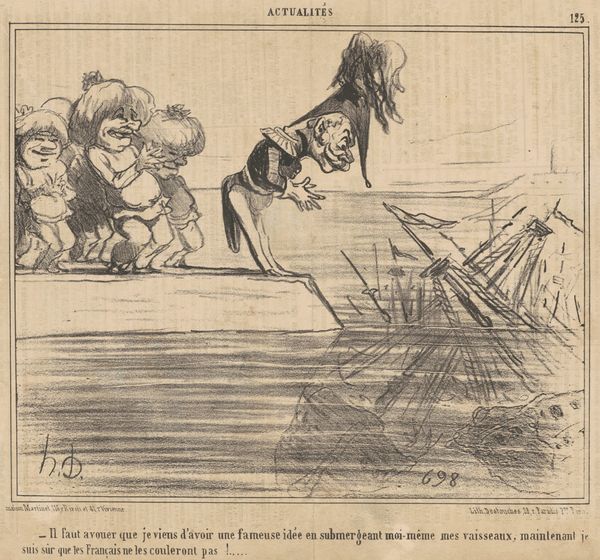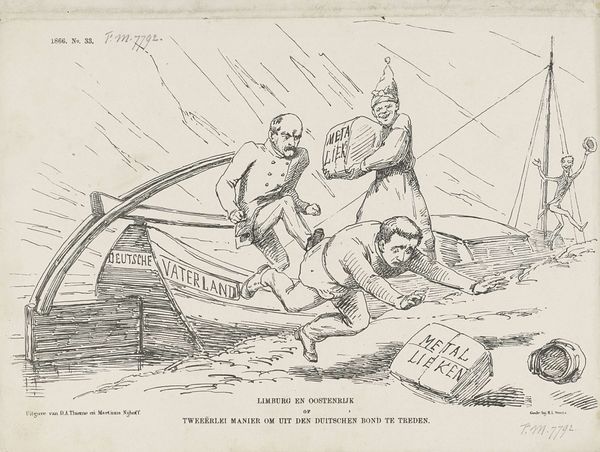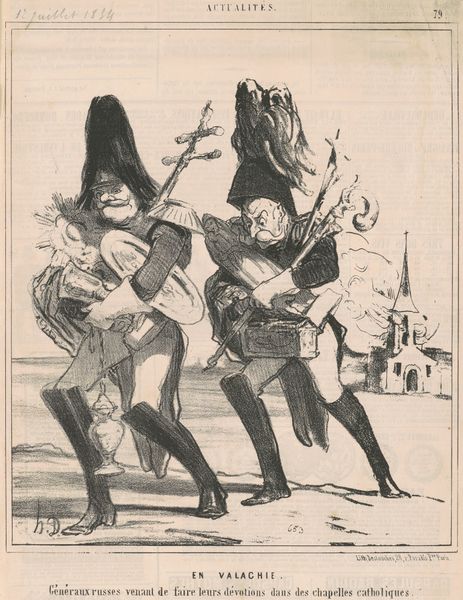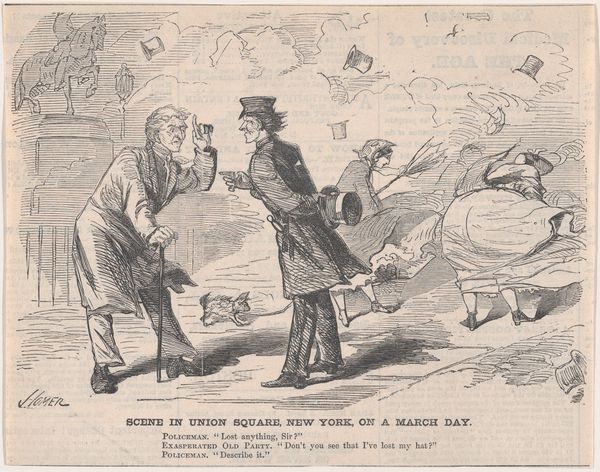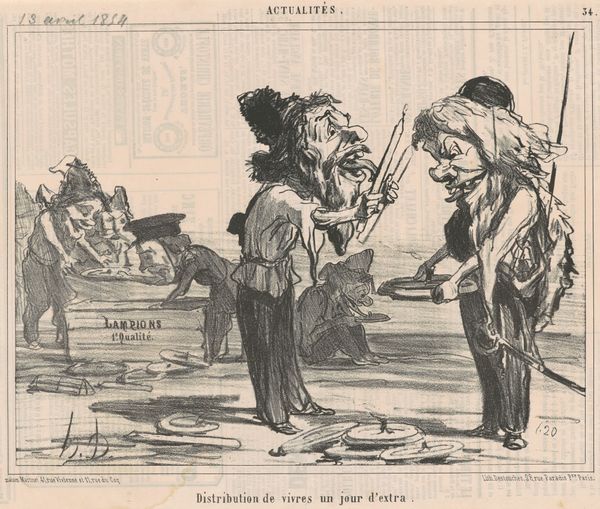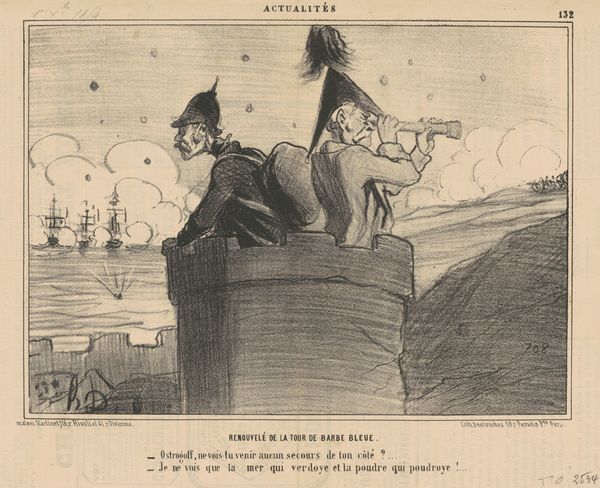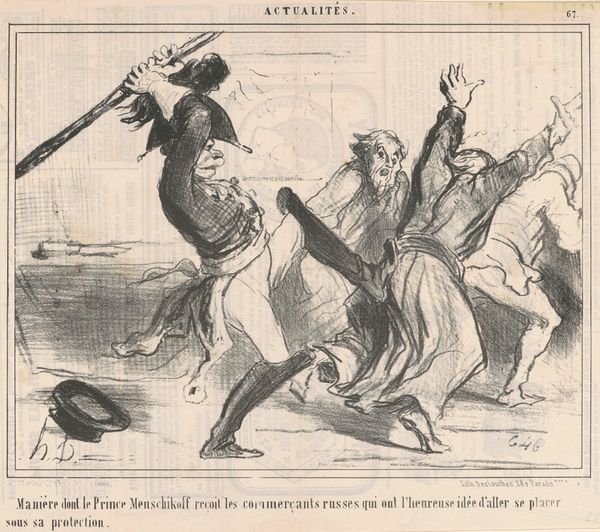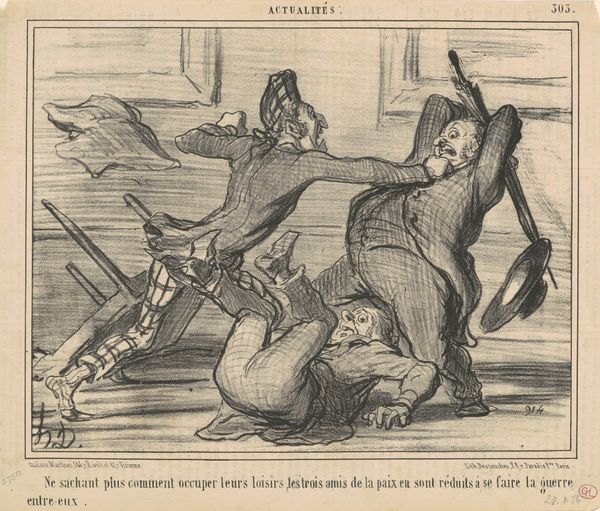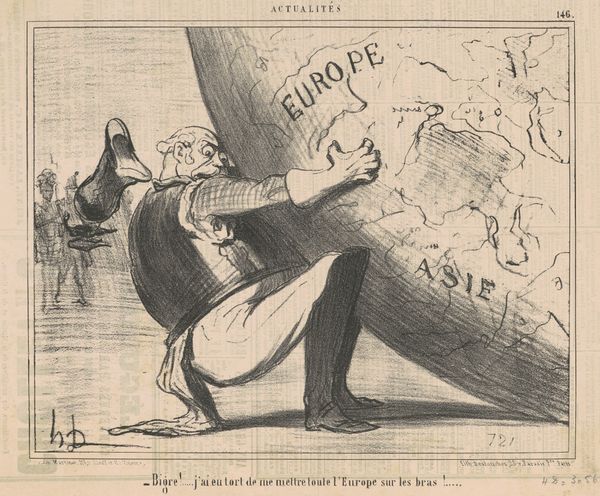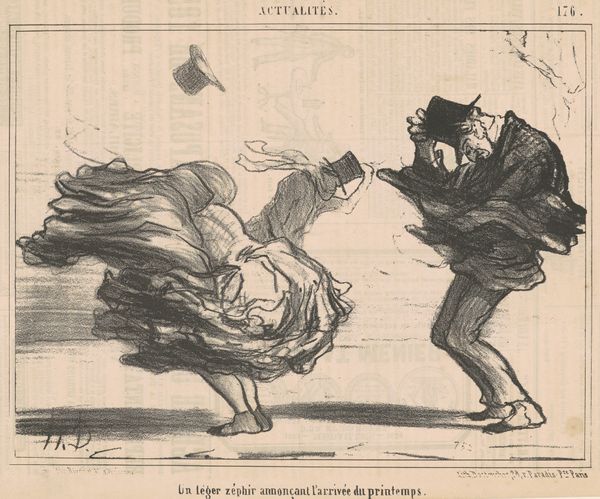
lithograph, print
#
lithograph
# print
#
caricature
#
romanticism
#
genre-painting
#
realism
Copyright: National Gallery of Art: CC0 1.0
Editor: Here we have "Giboulées de mars à Sébastopol," a lithograph print by Honoré Daumier, from around the 19th century. It's pretty chaotic! The figures are caught in what looks like a hailstorm, and their expressions are quite comical. What's your take on this, seeing as you are a renowned art expert? Curator: As a materialist, I see this lithograph as deeply embedded in the political and social landscape of its time, reflecting the anxieties of the 19th century. Look closely at the marks – the lithographic crayon strokes creating these figures buffeted by the storm. Editor: Right, the lines are really expressive. How does the process influence the meaning? Curator: The mass production enabled by lithography meant Daumier could disseminate social commentary widely. Think about who was consuming these images and the socio-economic context in which they encountered them. Editor: So it's not just about the individual artistry but the entire system of production? The "actualités," as indicated on the top, suggests a form of visual journalism? Curator: Precisely. Daumier uses this print medium to participate in contemporary debates, possibly satirizing political figures through these caricatures. Consider the materiality of the print itself – the paper, the ink, and the labour involved in its creation and distribution. How did those factors contribute to its meaning for a 19th-century audience? Editor: That really shifts my focus from the figures alone to the wider context of how and why this image was made and distributed. Thanks, this makes me reconsider the artist as being the sole author of the work and, rather, think about printmaking being an ecosystem of sorts. Curator: Exactly, that wider context is what completes the experience!
Comments
No comments
Be the first to comment and join the conversation on the ultimate creative platform.
